Katatonia
2018-12-19
by Niklas Göransson
The story of black/doom pioneers Katatonia is one of perpetual discouragement. Guitarist Anders Nyström narrates our retrospective journey as we trace the roots of the cold, northern melancholia deep into frozen soil.
The following is an excerpt from the full article, which is twice as long – covering the band’s career up to “Discouraged Ones” – and published in Bardo Methodology #4. The same issue also includes conversations with PROFANATICA, PRIMORDIAL, SOLSTICE, Götz Kühnemund, Louise Brown, THERION, BLACK FUNERAL, COUNTESS, Stockholm Slaughter, MARDUK, and TAAKE.
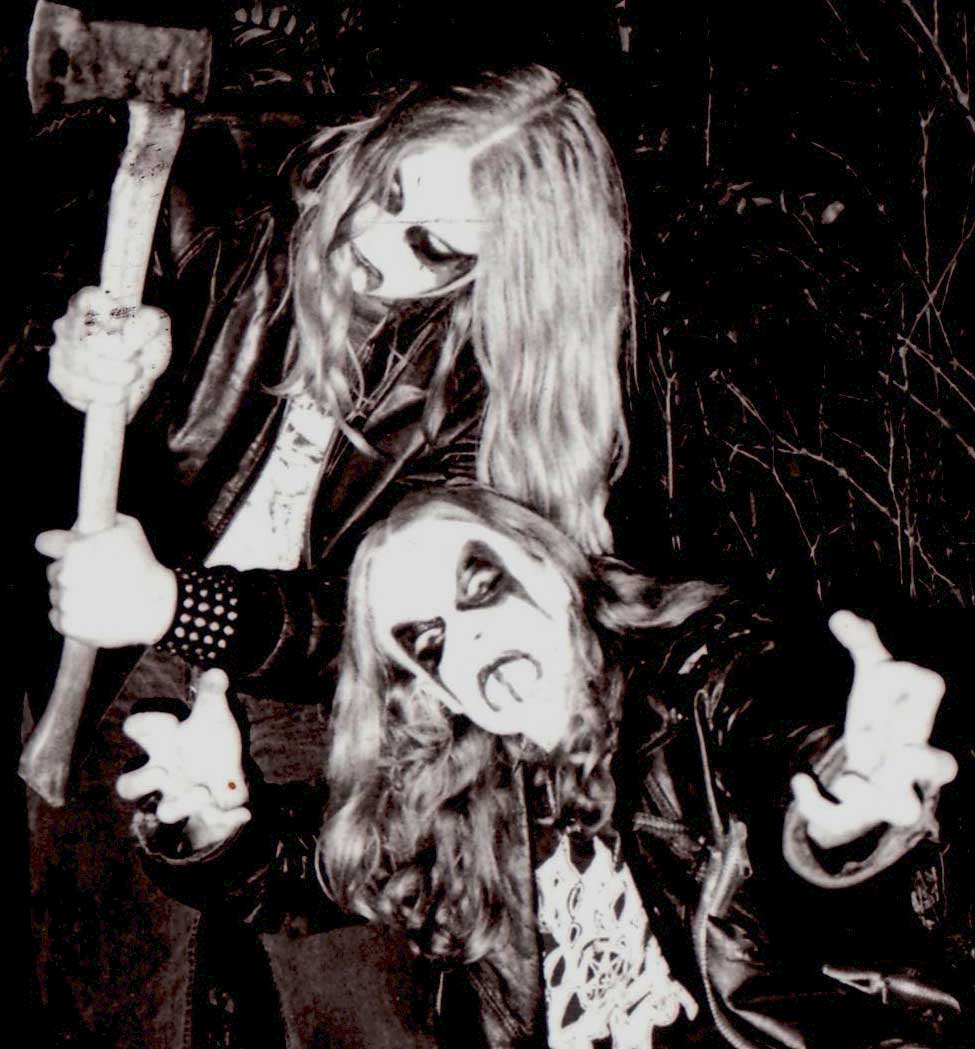
– We spent the better part of our formative years covering more generic styles which were anything but special and unique. However, those first steps were nonetheless highly exciting and meaningful events for two young amateurs who’d happily, and at any given chance, ditch school to sneak off into the rehearsal complex for a quick jam. We were constantly hoping for a gap to appear between one band wrapping up and the next bunch coming in. For the most part we’d only get five minutes or so, but once every so often a full hour – each second counted because our own practice-time was limited to three hours per week… just a drop in the ocean really, but after years of running in and out of that place we eventually developed enough skills to form a prerogative for the future, which eventually sanctioned the idea of becoming a real band with dreams and aspirations.
PARADISE LOST and BATHORY both played a significant role in shaping the sound of what became KATATONIA, the former lending melody and pacing whereas the latter their epic scope and distinctly northern atmosphere.
– Already back then, we knew that in order to create something unique you had to cross certain borders such as exploring outside your own genre. Most other bands were too narrow-minded to do that but we refused to abide by any kind of limitation. Still to this day we embrace a musical order from influential chaos! Our original vision rested on two fundamental cornerstones: a joint passion for the melodic and heavy elements of doom metal and, secondly, our rapidly growing dedication to the atmosphere and image of black metal. Hellbent for both, we simply decided to let the two worlds collide and planet KATATONIA was born! I wouldn’t really say we discovered a new style as much as we laid claim to something that felt like our destiny.
As the duo grew increasingly selective about their musical influences and identified which aesthetics intrigued them as artists, they began the quest of channelling all of it into their debut demo. With three songs written, the boys packed up their little ‘toy drumkit’ and 20-watt amplifier and set off to a country cabin where they rehearsed like maniacs for several weeks. Shortly thereafter, in July 1992, KATATONIA entered Unisound Studio – at the time known as Gorysound – and recorded “Jhva Elohim Meth”. This was the first time that guitarist Anders ‘Blakkheim’ Nyström ever held a bass guitar. Vocalist and drummer Jonas ‘Lord Seth’ Renkse was so used to his rackety little hobby kit that he felt perplexed by the professional drums in the studio.
– During all of his years as a drummer, Jonas never had a kit worthy to record with and always played on whatever the studio provided. Trying to acclimatise to the in-house drums, he struggled with the kick pedal which just didn’t respond the way he was used to. The demo songs originally had a few fast parts and these proved especially troublesome so Dan Swanö, in his capacity as producer and fellow musician, advised us to abandon all the faster stuff and go entirely slow and mid-tempo; in part due to Jonas’ performance issues but also to strengthen our musical concept, distinguish us from other bands, and make the demo stand out more. We kept pending between frustration and disillusion for a while there but eventually realised that since the fast parts weren’t all that many to begin with, Dan’s point had some merit.
If we take a song like “The Northern Silence” for instance, do you remember which parts were meant to be fast?
– “The Northern Silence” had none at all actually. From what I can remember, the first riff in “Without God” – you know, ‘Human birds watch the sky…’ – opened with a classic 2/4 beat but, after two rounds, slowed down to what’s presently heard on the demo. The second riff, ‘I am God, creator of life…’, which is pretty much the backbone of the entire song, was also in 2/4; this ended up sounding very different since the guitar was also played in sixteenth notes. The opening verse of “Palace of Frost” had the same beat. By and large, it didn’t really alter our sound much or detract from our vision. On the contrary, much thanks to Dan we probably solidified our trademark right then and there.
“Midwinter Gates”, “Palace of Frost”, “The Northern Silence” – all brilliantly appropriate titles for the compositions in question, capturing to perfection this cold melancholia which permeates the early KATATONIA material. I’m curious if they named the songs after how the music sounded or if they were compositionally tailored to pre-existing lyrics.
– The music mostly came first – however, much like scribbling lyrics, when composing you still tend to think in cinematic sequences. As for invoking feeling, guitars might actually send your mind soaring way further than any wording. The riff always comes with the capacity of either travelling by itself or leaving its space open for vocal enhancement, whereas lyrics always need to be accompanied by music or they’d just be poems? The writing process isn’t all black and white either. It’s never just the case of heading down a one-way street, but more of a chaotic intersection with highways leading off in all directions and where you’ve gotta take control of the traffic! When you finally get the music and lyrics vibrating off each other, it makes for a more full and unitary impact and that’s what creates long-lasting impressions.
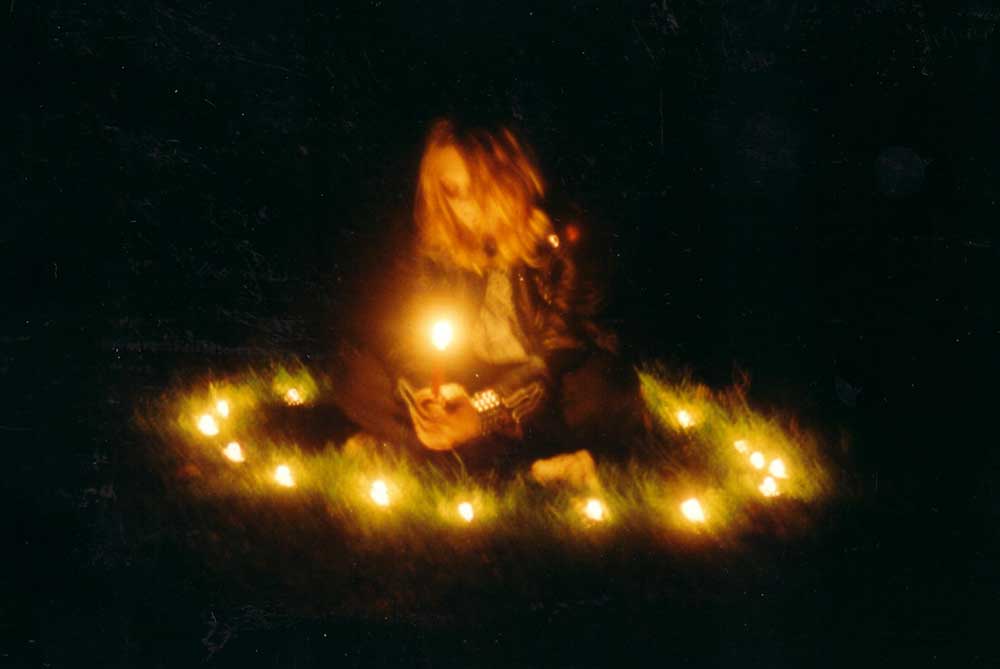
While I realise it might be spiritually redundant for the KATATONIA of today, I must say that their original logo features some of the genre’s finest typography.
– I think the old and very first version is quite conspicuous and classy for being designed in a time when most band-logos resembled some kind of arachnid entanglement. I remember first drawing it by hand with a charcoal pen, copying the sketch using carbon paper, and then finishing up in black ink. Not a hundred percent symmetrical, admittedly, but then again neither am I, haha! The logo was based on an Old English font I nicked from art class and it’s the weirdest thing – no matter how common such lettering eventually became, I’ve never seen this particular version used by anyone else. Not then, not now… perhaps it doesn’t even exist digitally? That thought actually triggered the idea of converting the whole alphabet into a digital font, even debating myself whether to include the pentagram and arrowed tails or not.
Did you ever embrace any of the metaphysical aspects of black metal or was it primarily a musical obsession?
– There was certainly more to it beyond a mere quest for metal and beer! We’ve always placed great emphasis on drawing inspiration from our surroundings and particularly back in the early 90s we spent a huge amount of time roaming the woods in the glow of ritualistic candles, or being knee-deep in swamps. We began making nightly visits to graveyards and chapels, gathering fuel and seeking a sense of presence in the dark. Most times we wore corpse-paint and, on rare occasions, used that as an opportunity to nail a photo session. Note how this definitely wasn’t about ‘posing’ as we in fact spent way too many hours hanging out in such places than what would be deemed normal behaviour. The reasons were of spiritual implication, to soak up the atmosphere under a funeral moon and become one with the dead. We never desecrated anything but sometimes ‘decorated’ the church gates with bones or nailed ungodly poems to its wooden doors.
Anders says that one of their favourite nocturnal hideouts was Skogskyrkgården, the Woodland Cemetery, a forest graveyard located to the south of Stockholm’s city centre.
– It offers dense trails through vast areas, you can easily lose direction and even track of time in there. I couldn’t help but start inner dialogues with myself, contemplating all these names, births, and deaths carved on the thousands of tombstones and thriving on that energy. We became fascinated by the crematory after hearing rumours that you could ‘smell’ the dead there. Later on, I found myself drawn to heights – probably seeking an escape from the suffocating suburban misery. I can passionately recall the feeling of reaching a solitary hilltop in the forests south of Stockholm, where I’d watch the horizon spread out in all directions with BATHORY’s “Hammerheart” pounding from my headphones. The reward was a feeling of majestic perfection! For quite some time, that place became the reliable getaway where I could re-ignite a flickering creative spark and clear my mind. Quite a few final decisions were probably set in stone up there.
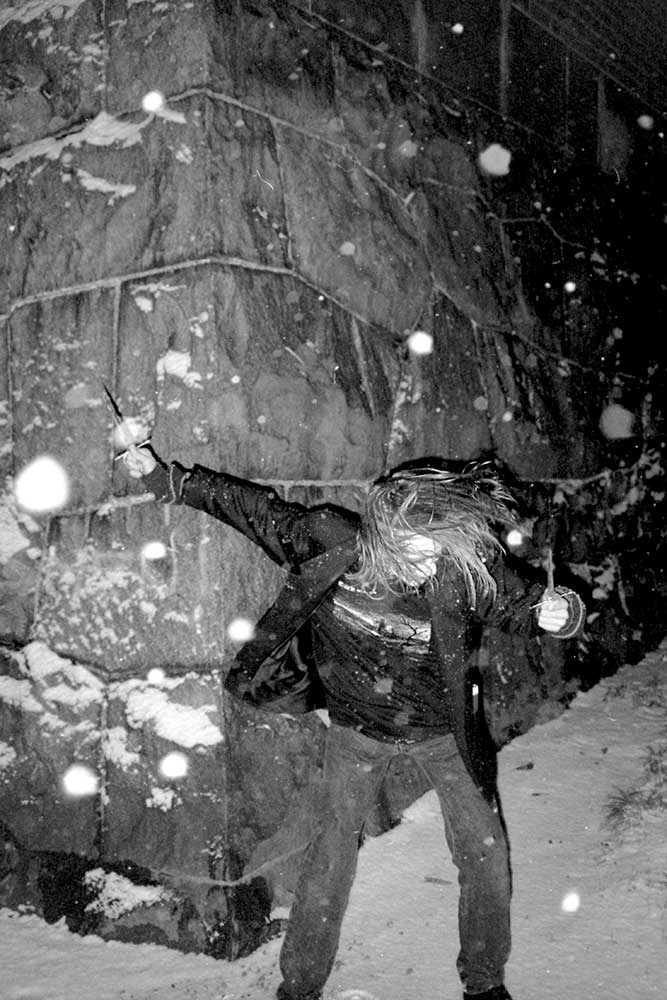
That “Rehearsal ’92” tape had some killer riffs, whatever happened to those songs?
– “Sunset Choir” was actually our very first completed work, written about one year before the tracks on “Jhva Elohim Meth”. I’ve always had a special bond with that song, from the time we were still calling ourselves DECOMPOSED or ENTITY, rehearsing at the youth-club in Fruängen. We didn’t have anything else in our repertoire and so used to jam it for hours on end. The other song, “Daylight Harvest”, was put together during the late summer of 1992; I guess I wanted to bring the melody of PARADISE LOST even closer together with the pounding beats of epic BATHORY. There are some cool riffs in these songs and I kinda regret that we never got around to recording studio versions of them. If it hadn’t been for that rehearsal, “Daylight Harvest” would likely have been included on our debut album but we viewed the tape as its own ‘release’, done and dusted, and so felt no need to revisit the material. “Without God” was the only demo song we carried over to “Dance of December Souls” – it was considered our ‘hit’.
The tapes caught the attention of a young Swedish music enthusiast named Tomas Nyqvist, owner of the emerging underground label No Fashion Records. After fielding the remaining offers, KATATONIA decided to go with Nyqvist‘s operation and, in April 1993, entered Unisound Studios to record their debut album, ”Dance of December Souls”. Besides PARADISE LOST and BATHORY, the material shows heavy influence from FIELDS OF THE NEPHILIM and to a lesser extent THE SISTERS OF MERCY. The vocals are immersive and very raw, so much so that Lord Seth ended up doing serious damage to his vocal chords. The eerily thin but ultimately fitting guitar sound stems from Anders accidentally connecting his distortion and delay pedals in the wrong order.
– Being our debut, this will always be a special one to me. Seeing the album get its own shelf at the record store was nothing short of a milestone for us, an achievement and reward I can still remember crystal clear. And yes, Jonas’ vocal performance turned out to be a classic; he gets an award for screaming his heart out, relying fully on emotion and spirit rather than vocal technique. You can really taste the anguish in some of those screams, way to go! As for the guitar sound, due to my inadvertent connection scheme all delay trails and feedback – of which I used a lot on both the rhythm and lead guitars – got distorted and this resulted in a less smooth, noisier, and somewhat broken and hollow sound. Kinda like a busted speaker! It’s unique though and not artistically wrong, but distorting the delay is not exactly how you do things ‘by the book’. On top of that, the guitars are pushed even further back into the soundscape by drums triggered to full velocity.
The percussion on display might not be spectacular from a technical standpoint but I’d argue this to be for the betterment of the whole. Obviously mere speculation here, but I suspect a more skilled drummer might’ve sped up the tempo and given it more ‘groove’ – which in turn would likely have been detrimental to the chilling and hypnotic atmosphere.
– As the main songwriter and co-performer on “Dance of December Souls”, my biggest regret and long-lasting beef with the album is how we rushed through the recording without realising it would haunt us for the rest of our days. From the moment we sat foot in the studio ‘til we walked out the door with the master tape in our hands, it took no more than five days! Apparently enough to make an album but not a lot of time if you keep in mind how this also included mixing. Our set-up was that myself and Jonas would record the drums and rhythm guitar live, just as at rehearsals. Once we had the song’s backbone on tape I’d overdub the remaining guitars, then hand over the vocals to Jonas as well as work on the keyboards with Dan Swanö. And here’s where things went wrong: while recording the basic tracks there were many instances when both of us looked up at each other in acknowledgement of having fucked something up. But you know what? We still kept bloody going.
With today’s modern digital studios, in the event of a mistake one can just stop, skip back thirty seconds and then resume recording. However, the early-nineties Unisound was equipped only with an analogue tape so cutting-in abilities were severely limited.
– If the song had an instrumental break we could use that as a cut-in point and easily get back on track, but if there were consistent drum parts from start to finish it meant you’d have to begin from scratch every time. I believe this turned into a halo of fear which made us really nervous. So instead of enjoying the ride and turning in our best performances, the objective subconsciously shifted more towards simply getting through to the end of the song. Jonas would sometimes lose his way and heavily improvise while we kept going, as if no one would ever notice. Unfortunately, those inferior takes and unnecessarily sloppy performances are now there to torment us for eternity. We could’ve done better – we should have done better – but the stress and inexperience usurped all logical parts of our brains. That said, I still like the songs and atmosphere; a heavy Nordic melancholia unrivalled for debut metal albums back in 1993.
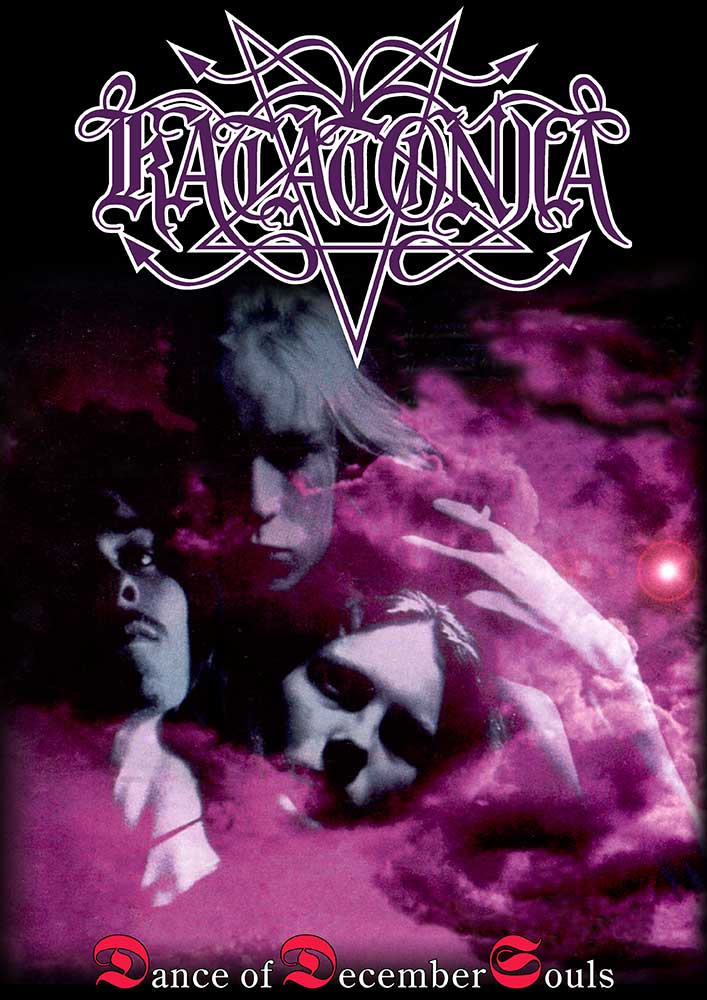
The cover artwork was absolutely stunning for its time, and if I recall correctly it cost a minor fortune?
– I can’t remember exactly what the artwork bill landed on but I’m afraid it cost more than the entire studio recording! Back then, the state of things was opposite to now: painted artwork was the standard process and a fairly cheap one at that, while we’d only scratched the surface of digital photoshopped covers. There were very few designers around, all of whom charged a lot. In hindsight, the “Dance…” artwork isn’t technically extraordinary whatsoever – it’s a simple montage of our faces in the Northern Hemisphere, but it managed to trespass into movie poster territory and really stood out among all the painted covers.
Ecstatic to have achieved their life-long dream of recording an album, the young men couldn’t wait to see it released. Alas, No Fashion owner Tomas Nyqvist was more of a passionate fan than a structured business-minded entrepreneur and found himself in slightly over his head, causing a several months-long delay. When it was finally released in December 1993, Nyqvist had lost control over his label and KATATONIA suddenly found themselves under a new and far inferior contract with the new owners, distribution company House of Kicks. This is a long story which is thoroughly explored in a separate feature. “Dance of December Souls” was received favourably both at home and abroad; as such, it’s interesting to speculate what might’ve happened if they’d had a label really pushing them at that point – proper promotion, tours, and so forth. Seeing what a modest record company such as Osmose Productions did for MARDUK, IMMORTAL, IMPALED NAZARENE and so on in the same era, things might have played out rather differently had KATATONIA received the same treatment. Especially if the debut had been released without delays during a time when underground metalheads, due to the scarcity of releases, essentially bought everything labelled black metal. Merely their logo coupled with that cover could potentially have gone a long way.
– As it happens, we did send the demo to Osmose and got a letter back from Hervé, the label boss, but the reply wasn’t quite what we were hoping for; he was more interested in distributing the demo than offering us a record deal. But yeah, it might not be a farfetched claim that if we’d been picked up by Osmose or signed to one of the four big extreme metal labels of the time – Century Media, Nuclear Blast, Earache, and Peaceville – and released “Dance of December Souls” in mid-1993, the 90s would have looked very, very different for us. I imagine our first era would’ve been extended and manifested in both additional albums and tours.
Instead, they spent more time in court than on stage. Attempting to regain the rights to their album, KATATONIA sued the new incarnation of No Fashion but this accomplished nothing besides driving Tomas Nyqvist, the former owner, into personal bankruptcy. Since “Dance of December Souls” sold really well, House of Kicks wanted KATATONIA to sign a multi-album contract. Perhaps needless to say, they declined. This meant no label support for tours and such, leaving them with no more than a handful of domestic gigs – some of which were under less than stellar conditions, once sleeping at a bus station and another time the entire band on the same floor mattress. Presumably not how a teenager envisions earthly existence after releasing a successful debut album.
– Well, the fact that we didn’t have much to compare with probably eased the burden of disillusion. I mean, gigs were few and far between but still serve as cool memories. We never hesitated to play in exchange for petrol and beer – hell, we didn’t even ask for a fee! The money was secondary, our priority lay in taking the stage. Of course, having such a comprehensive international network through the tape-trading circuit, receiving all the fan-mail, and seeing the amazing packages touring Europe eventually drove us to set sight on foreign soil. The problem was that we got neither tour support nor any promotion whatsoever, not to mention royalties. No Fashion certainly released our album but that was their sole accomplishment, which by definition made them more of a pressing plant posing as a label. They basically did a fine job ruining themselves as a label and stifling the early potential of all the bands on their roster. A sinking ship, first ran by a die-hard amateur with good intentions and then, later, ironically looted by greedy minds riding the waves of… fashion!
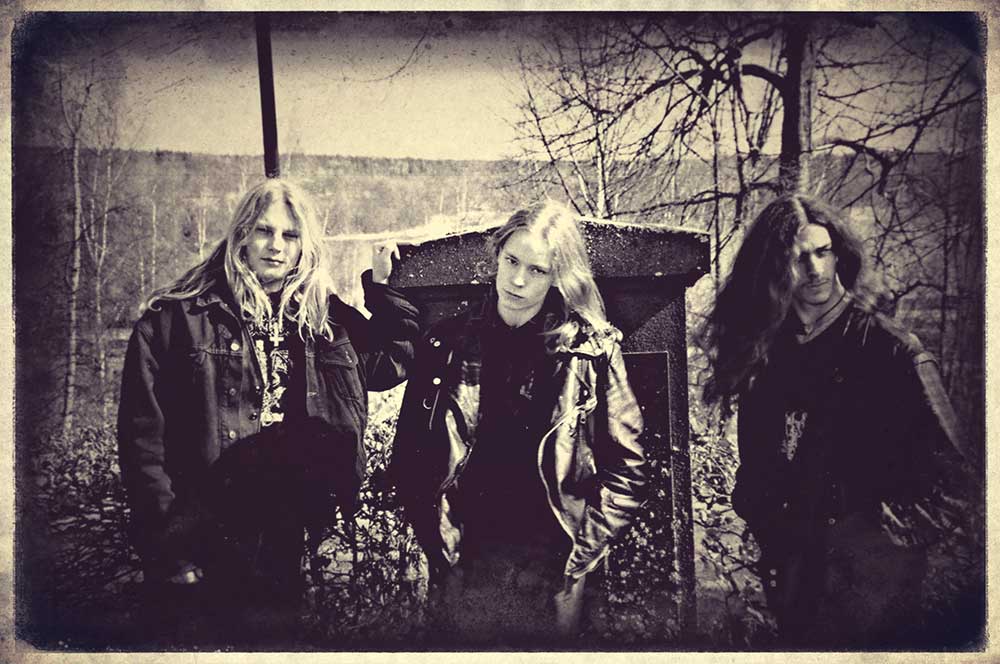
June 1994 – KATATONIA return to Unisound and set about recording two tracks, “Black Erotica” and “Love of the Swan”, both of which were released on Wrong Again Records’ “W.A.R. Compilation: Volume One” the following year. These compositions are in my opinion some of the absolute finest early-day KATATONIA material.
– We were so happy with “Black Erotica” that we decided to re-record it for our 1996 album, “Brave Murder Day” – entitled “12” for that edition. Those tracks were the first ‘metal’ material I wrote following “Dance of December Souls”. Earlier that year, in February, we made a huge experimental detour in writing and recording the epic eleven-minute song “Scarlet Heavens”, which was basically full-on gothic rock. It was released on vinyl as a split ten-inch with PRIMORDIAL in ‘96. Perhaps the offer from Wrong Again to write two exclusive songs for their compilation is what drove us to further explore our own niche in metal.
Classic compilation that one. Besides DISSECTION’s amazing TORMENTOR cover, “Elizabeth Bathory”, it also premiered “Where Dead Angels Lie” – a song of which like had never before been heard – later featured on their 1996 album, “Storm of the Light’s Bane”.
– Yeah, such killer songs! Jon Nödtveidt was a truly extraordinary songwriter. You know, DISSECTION recorded “The Somberlain” just a few days before we entered Unisound for “Dance of December Souls”. Dan played us the whole record and I was blown away as soon as “Black Horizons” came on! We got to play live together and Jon also came up to hang out with Jonas and myself in Stockholm. Later, since both bands were stuck on the same sinking ship, we had many discussions on how to end the No Fashion fiasco. The very last time I met Jon was at a bar in Stockholm, he handed me a copy of their comeback album, “Reinkaos”. DISSECTION left a huge legacy for Swedish black and death metal. Rest in peace.
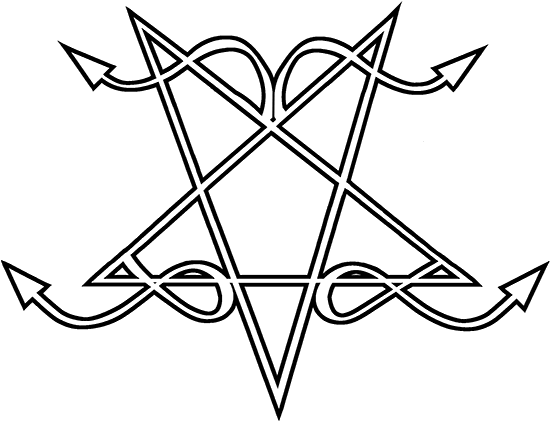
This was an excerpt from the full article, which is twice as long – covering the band’s career up to “Discouraged Ones” – and published in Bardo Methodology #4. The same issue also includes conversations with PROFANATICA, PRIMORDIAL, SOLSTICE, Götz Kühnemund, Louise Brown, THERION, BLACK FUNERAL, COUNTESS, Stockholm Slaughter, MARDUK, and TAAKE.



